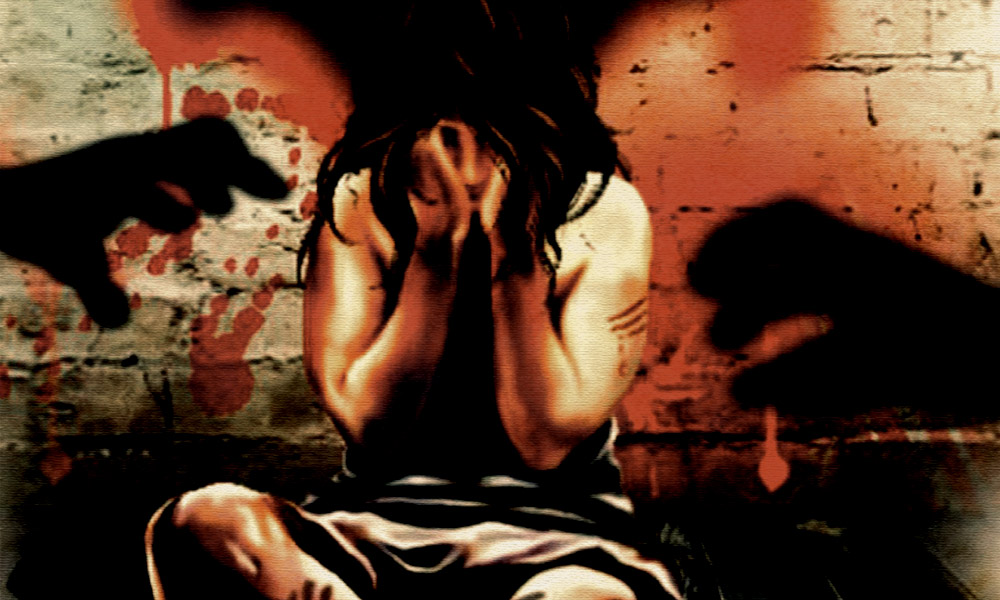
Image Credit: India.com
'Sexual Violence Often Used As Weapon During Caste, Class Conflict': Sociologist Abhijit Kundu
India, 3 Oct 2020 9:40 AM GMT | Updated 3 Oct 2020 9:42 AM GMT
Editor : Navya Singh |
Navya writes and speaks about matters that often do not come out or doesn’t see daylight. Defense and economy of the country is of special interest to her and a lot of her content revolves around that.
Creatives : Rajath
A free spirit who find meaning in life with the virtue of creativity and doing job par its excellence, animal lover and traveller by heart.
In the aftermath of the Hathras horror, The Logical Indian spoke to sociologist Abhijit Kundu to understand the caste dynamics behind sexual assault.
Across vast swathes of India, caste dynamics permeate every aspect of life. Dalit women and those from the other so called 'lower-caste' communities have always been vulnerable to systematic oppression and attacks.
They regularly fall victim to sexual crimes by 'upper-caste' men.
Such is the case of the 19-year-old Dalit girl from Uttar Pradesh's Hathras, who was allegedly gang-raped and murdered by four upper caste men.
The nation shuddered at the sheer brutality of the crime. The country is outraged at the Yogi Adiyanath-led Uttar Pradesh government, which allegedly tried to keep the victims' family quiet.
The body of the victim was forcefully cremated at night. The Hathras DM was seen intimidating the family into silence.
An important question to be raised here is: had the victim not belonged to the Dalit community, would then she and her family been treated just as disrespectfully as they are being treated now?
To understand the caste dynamics behind sexual assault, The Logical Indian spoke to sociologist Abhijit Kundu, who is also a faculty of Sociology at Delhi University.
"We need to understand that caste-based violence is perpetrated not just on women, but also on men. We hear about numerous incidents of men from lower castes being beaten up or even killed for sitting beside an upper-caste man at the dining hall of a wedding ceremony, or for daring to enter a temple," Abhijit says.
"However, when it comes to sexual violence, those from the Dalit community or other lower-caste communities are definitely more vulnerable to fall prey to perpetrators than others are," he adds.
Media houses are often questioned for mentioning the caste of the victim/survivor and perpetrators involved in such crimes. What we essentially need to understand is that upper-caste members dominating members from lower-castes is a deeply ingrained issue in Indian society. The ancient male dominant society is still influential almost everywhere in the country, so these crimes almost always have a caste angle to them.
"The way masculinity has been constructed in our society, men find it easy to use rape as a tool to exercise their power. Even during rapes where no caste angle is involved -- take the 2012 Nirbhaya case for instance -- the main motive behind rape is to oppress the other gender, to show them that men are more powerful in society," explains Abhijit.
"Similarly, rape is often used as a weapon during situations of caste or class conflict. It's a tool for oppression and exploitation. Since ancient times, violence against Dalits, especially Dalit women, has been prevalent in society, and we can hear the echo of their pains and struggles even today," he adds.
Data suggests that over four Dalit women are raped every day. The National Campaign on Dalit Human Rights, an NGO, revealed that more than 23% of Dalit women report being raped. In fact, many of them have reported multiple instances of rape.
"Those who are powerful tend to oppress the weaker sections of society. Even among the Dalit community, the more powerful ones tend to intimate the weaker sections of the same community. The caste dynamics are no different," Abhijit says.
"Had the Hathras victim not been a Dalit woman, her family may have been spared from all the humiliation and injustice. This is not to say that those who are not Dalits are never raped or never oppressed -- they definitely are. But the caste division in India is such that the moment you belong to a lower-caste, you are more likely to be demeaned by society," he says.
On being asked if the caste division prevails as much in the urban areas as in the rural, Abhijit says: "In the rural area, mostly, people openly express their disgust at associating with the lower-castes. In other words, it is more visible and tangible in the rural areas."
He adds: "However, the cities with the skyscrapers and so called progressive individuals living in them are not always different. They may not show it, but at the back of their minds, they too are a part of the system that believes that caste determines a person's position in society."
The subordinate position of Dalit women, positioned at the bottom of India's caste, class, and gender hierarchies and almost always uneducated and paid much less than their male counterparts, is often exploited by those in power. Upper-caste members carry out their attacks with impunity.
"The outrage needs to persist. The voices must not die down. We need judicial reforms. Those who manage to pursue cases of sexual violence have to face entranced biases and prejudices at every step – from the police to doctors to even the close ones. This needs to stop," Abhijit says.
The residual anger is all we have. Beyond that, there is hardly any real concern towards these horrific atrocities.
It is shameful and unfortunate that even years after independence, the patriarchal structure of society has refused to alter. Violence and sexual harassment are crucial mechanisms to show women of lower castes, their position in society.
Right now, our basic need is the proper functioning of the institutions meant to protect them and their lives.
Also Read: 'Media Will Leave, We Will Be Here': Hathras DM Seen Intimidating Rape Victim's Family
 All section
All section














